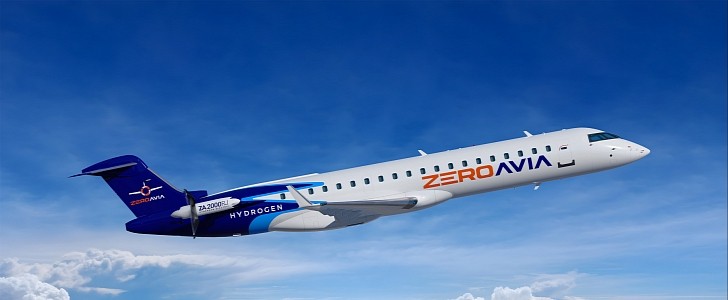If there’s one manufacturer that makes the idea of hydrogen-electric aviation credible and sustainable, that’s ZeroAvia. The UK-based company that’s developing powertrains for future green commercial airliners knows how important it is to have the best players in the industry by your side. So after a fruitful collaboration with HyPoint, a NASA award-winning company specializing in fuel cell technology, ZeroAvia has now acquired it.
ZeroAvia has been working with HyPoint within the HyFlyer II project, supported by UK’s ATI program. At the beginning of this year, HyPoint relocated most of its R&D to UK to enhance the collaboration.
Now, ZeroAvia has taken an even bigger step by acquiring it in full. This means that all of HyPoint’s team members will be integrated into ZeroAvia, across its multiple locations while HyPoint’s CEO Alex Ivanenko starts his role as GM for VTOL and New Segments at ZeroAvia.
As a result of this move, the manufacturer boasts unmatched expertise in hydrogen-electric aviation, says CEO Val Miftakhov. HyPoint’s main focus is on turbo-air cooled HTPEM (high-temperature proton exchange membrane) hydrogen fuel cells.
In addition, ZeroAvia benefits from LTPEM (low-temperature PEM) as well through its partnership with another important player, the PowerCell fuel cell maker. This means that the UK-based manufacturer will now have the best of both HTPEM and LPTEM technologies at its fingertips. A serious advantage, and one that is meant to speed up product development significantly.
ZeroAvia is currently in the process of certifying its ZA600 powertrain, boasting a 300-mile (483 km) range. Two Dornier 228 aircraft that were retrofitted with the ZA600 are the platforms used to conduct flight tests, one in the UK and the other in California. The ZA600 could power a 19-seat regional aircraft and is due to be certified by 2024. But that’s just part of a much more ambitious plan of eventually certifying the ZA2000, a 1.8-MW system that could power airliners with up to 80 seats.
Now, ZeroAvia has taken an even bigger step by acquiring it in full. This means that all of HyPoint’s team members will be integrated into ZeroAvia, across its multiple locations while HyPoint’s CEO Alex Ivanenko starts his role as GM for VTOL and New Segments at ZeroAvia.
As a result of this move, the manufacturer boasts unmatched expertise in hydrogen-electric aviation, says CEO Val Miftakhov. HyPoint’s main focus is on turbo-air cooled HTPEM (high-temperature proton exchange membrane) hydrogen fuel cells.
In addition, ZeroAvia benefits from LTPEM (low-temperature PEM) as well through its partnership with another important player, the PowerCell fuel cell maker. This means that the UK-based manufacturer will now have the best of both HTPEM and LPTEM technologies at its fingertips. A serious advantage, and one that is meant to speed up product development significantly.
ZeroAvia is currently in the process of certifying its ZA600 powertrain, boasting a 300-mile (483 km) range. Two Dornier 228 aircraft that were retrofitted with the ZA600 are the platforms used to conduct flight tests, one in the UK and the other in California. The ZA600 could power a 19-seat regional aircraft and is due to be certified by 2024. But that’s just part of a much more ambitious plan of eventually certifying the ZA2000, a 1.8-MW system that could power airliners with up to 80 seats.







